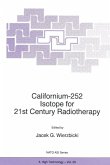from combining radiation with a molecular targeted agent - namely cetuximab, a recombinant mouse/human chimeric monoclonal antibody against the Epidermal Growth Factor (EGF) receptor [4] Astsaturov, Cohen and Harari present a more indepth review of the biology of the EGF Receptor and its signaling pathway in Chap. 7 as a potential target in combination with fractionated radiotherap y for head and neck squamous cell carcinoma (HNSCC). A flurry of agents are under de velopment for targeting EGFR and in March 2006, the US Food and Drugs Administration approved cetuximab combined with radiation as a primary treatment option for patients with loco-regionally advanced HNSCC in whom chemoradiation therapy is deemed not to be an option. While blocking the EGF pathway during fractionated radiotherapy may seem an obvious strategy [5], the rationale for combining antiangiogenic and antivascular targeting agents with radiation may be less intuitive. However, recent research shows that there are several reasons why this could result in a therapeutic gain in practice. Chapter 8 is a review of this rapidly expanding field by Citrin and Camphausen. Targeted agents combined with radiation may offer new opportunities in the treatment of central nervous system malignancies, a tumor type where the outlook remains poor despite some recent progress [6]. Current attempts to overcome rad- tion resistance in these tumors on the basis of an improved understanding of their molecular biology are the topic of Chap. 9 by Chakravarti and Palanichamy.
Dieser Download kann aus rechtlichen Gründen nur mit Rechnungsadresse in A, B, BG, CY, CZ, D, DK, EW, E, FIN, F, GR, HR, H, IRL, I, LT, L, LR, M, NL, PL, P, R, S, SLO, SK ausgeliefert werden.









